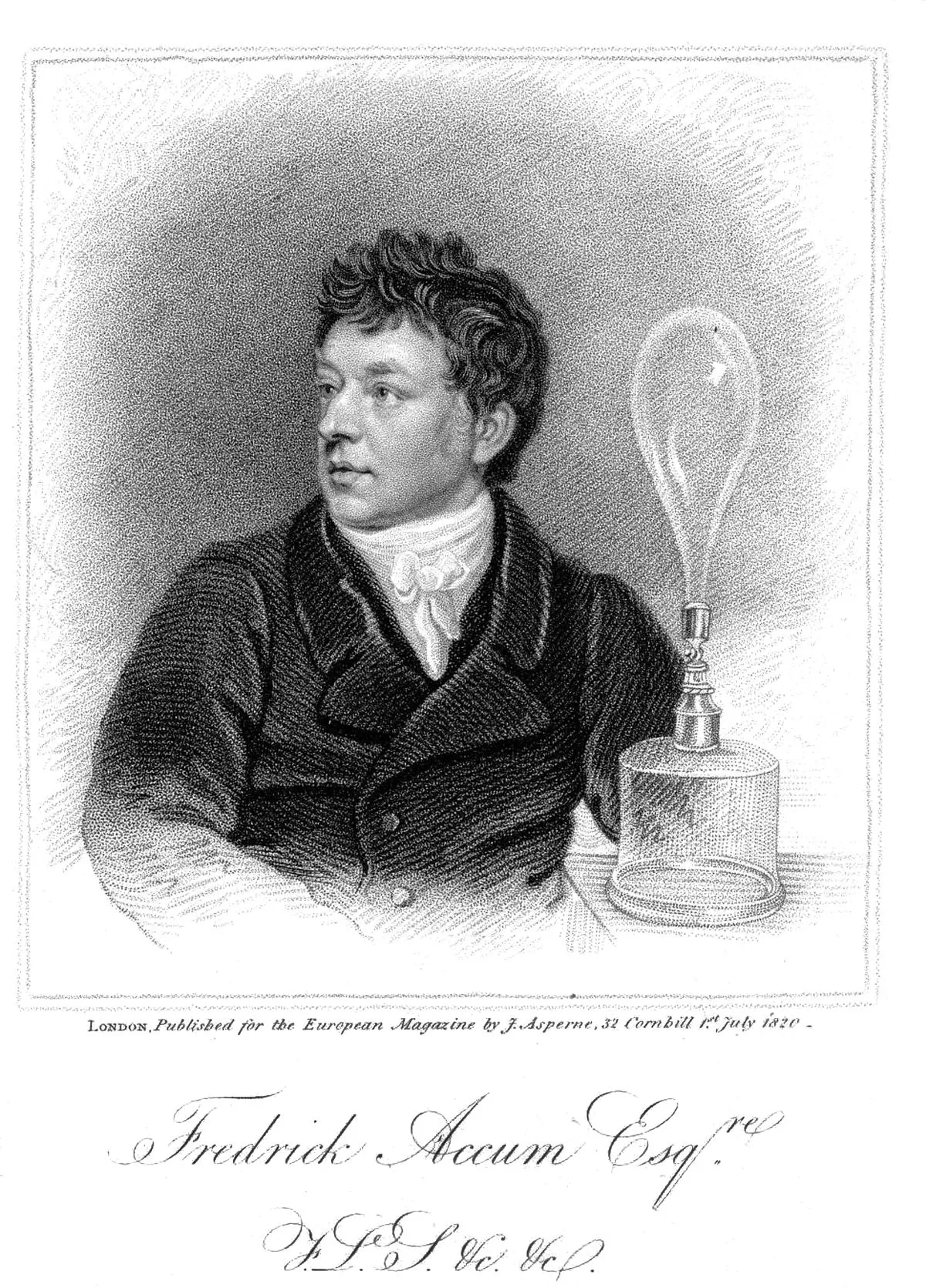 1.
1. Friedrich Christian Accum or Frederick Accum was a German chemist, whose most important achievements included advances in the field of gas lighting, efforts to keep processed foods free from dangerous additives, and the promotion of interest in the science of chemistry to the general populace.